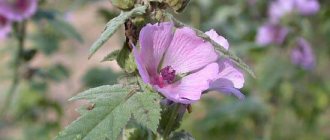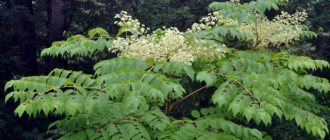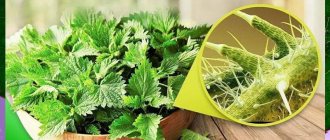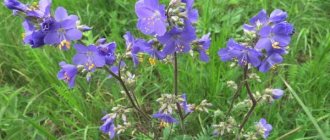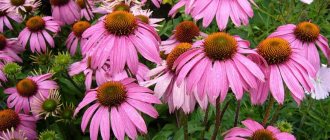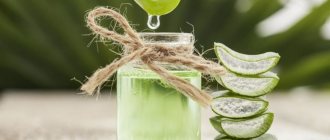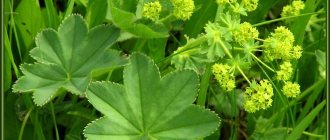Bearberry, also known as bearberry, owes its popularity among urologists and its use in folk medicine to its beneficial effects on our urinary system. The plant is effective for diseases of the prostate gland, proteinuria, pyuria, nocturnal enuresis, and various urinary tract infections.
Bearberry softens the effects of kidney stones. The plant has antioxidant and detoxifying properties, so it is especially useful in combating dermatological problems such as inflammation or discoloration of the skin. Let's see why it is worth using preparations with bearberry and what contraindications exist.
Morphological description
The height of the bush is 5-30 cm. The stems are branched, recumbent, rooting and ascending. The leaves have an oblong, obovate shape. At the base they are narrowed into a short petiole, and at the top they are rounded. Dark green above, shiny, with visible veins, matte and lighter below. The leaves have a solid edge, without edges, and are arranged alternately: they live for 2 years, and in the 3rd they die and fall off.
A distinctive feature of lingonberries is small brown dots on the back of the leaves. Knowing this feature, plants can be easily identified in nature.
Blooms from April to June. The inflorescence is a small apical raceme, consisting of several drooping white-pink flowers on short pedicels. The corolla itself is pitcher-shaped, has a five-toothed bend, and there are hard hairs inside. The anthers with appendages are dark red in color and open with holes at the top. The style is somewhat shorter than the corolla.
The fruit ripens in August-September and is a berry-shaped drupe of dark red color with a diameter of 0.6-0.8 cm. The pulp is mealy, inside of which there are five seeds.
Chemical composition
The main chemically active substances of the plant are phenols and phenol glycosides (their derivatives):
- arbutin (up to 20% in shoots) – its content is higher in autumn;
- methylarbutin;
- n-methoxyphenol;
- hydroquinone;
- 2-O-galloylarbutine;
- piceoside;
- 6-O-galloylarbutin.
Bearberry leaves are also rich in:
- terpenoids (ursulic and oleic acids, uvaol, erythrodiol, lupeol, α- and β-amyrins);
- anthocyanins (cyanidin, delphinidin);
- catechins;
- resin;
- wax;
- iodine, zinc, copper and manganese;
- ascorbic acid.
The following were found in the shoots of the plant:
- flavonoids (isoquercetin, quercetin, myricitrin, myricetin, hyperoside);
- C-benzylated dihydroflavanones (hamanetin and isochamanetin);
- iridoids (monotropein and unedoside);
- phenolcarboxylic acids with derivatives (up to 6% gallic acid, n-coumaric acid, caffeic acid, lilac acid, ellagalic acid, protocatechoic acid, vanillic acid, methyl gallate, corilagin);
- up to 35% pyrogallic tannins (ellagitannins and gallotannins);
- organic acids (formic, quinic, galsic, malic, etc.);
- small amount of essential oil;
- micro- and macroelements.
History and scientific research of bearberry
- The first mentions of the medicinal properties of bear's ear date back to the 12th century - then it was already used in England: in the Old English medicinal book “Meddygon Myddfai” a description of the properties of the plant is given.
- In medieval medicine of the Armenian peoples, torment was used as an astringent for diarrhea and hemoptysis.
- Bearberry received recognition in Germany as a medicinal plant only in the 18th century.
The German public health service recognizes bear's ear as one of the effective remedies for the treatment of inflammatory processes of the urinary tract.
- Instructions for the use of bearberry in scientific and practical medicine in France date back to the 20s. 20th century The famous herbalist in this country, Leclerc, recommended the plant as a diuretic and anti-inflammatory drug for pathologies of the kidneys, bladder and prostatitis.
- In folk medicine of Siberia and the North of Russia, bearberry was used for pathologies of the urinary system, for the treatment of sexually transmitted diseases - syphilis and gonorrhea. Moreover, in a number of localities in Russia the plant is still used for this purpose.
- In Lithuanian folk medicine, the plant was used in the treatment of chronic diarrhea, hypertension, neuroses, to tone the body, and eliminate inflammatory processes.
- Tibetan healers use the leaves of the plant for heartburn, Graves' disease, and gastritis.
- Ukrainian herbalist Nosal V. recommends plant preparations for urinary incontinence at night in children.
- Czech scientists have developed a technology for culturing mesophilic cells of bearberry leaves. However, arbutin and other phenol glycosides do not accumulate with this method, and the active base is represented by triterpene compounds derived from oleanolic acid.
- In 1974, at the Chemical-Pharmaceutical Institute of St. Petersburg, a method was developed for obtaining a liquid concentrate from a plant leaf that contained up to 15% arbutin. In experiments conducted on laboratory rats, it was found that the drug increased diuresis by 37%.
- In vitro experiments have proven that plant leaf extracts inhibit the growth of Staphylococcus aureus, Enterobacter aerogenes, Enterococcus faecalis, Bacillus subtilis, Salmonella typhimurium, Escherichia coli, Proteus vulgaris, Proteus mirabilis, Ureaplasma urealyticum, Serratia marcescens, Pseudomonas aeruginosa, Streptococcus mutans and Mycoplasma hominis .
- In 2001, Japanese scientists found that bearberry extract increases the sensitivity of St. aureus (methicillin-resistant strains) to β-lactam antibiotics.
basic information
Common bearberry (aka bear's ear) is becoming less and less common in the wild today, but if you find it, don't pick it unnecessarily - it's a protected plant.
At first glance, bearberry is difficult to distinguish from lingonberries. We are talking about a green bush with small leaves, flowers and fruits, very similar to lingonberries.
- The plant part used is the leaf (Uvae ursi folium), but the flowers and root are also used in folk medicine.
- Collection time is all year round, preferably in spring or autumn, when the maximum content of active substances is concentrated in the plant.
- Harvesting (drying) – carried out in the sun or in the shade. Slow drying may reduce the content of the important substance arbutin! Therefore, it is recommended to maintain a temperature of about 35-40? C. After drying, brown leaves must be removed; the ratio of fresh to dried raw materials is approximately 3:1.
- Storage - in paper or canvas bags, away from sunlight.
Pharmacological and medicinal properties
Plant preparations have pronounced antimicrobial, anti-inflammatory and diuretic properties. The beneficial properties of bearberry are due to the action of the chemicals that make up its parts.
- The anti-inflammatory effect is due to the presence of tannins in the plant.
- Antioxidant properties are determined by the presence of gallic acid.
- Antiseptic properties are associated with the local irritant and antimicrobial effect of phenol hydroquinone.
- The diuretic effect is also associated with hydroquinone and other phenols: they irritate the kidney tissue as they pass through it and increase urination.
- Antimicrobial properties are associated with the glycoside arbutin, which breaks down into free hydroquinone and glucose under the influence of the enzyme arbutase.
- The antibacterial and anti-inflammatory effect is determined by ursulic acid.
- Hydroquinone has a rejuvenating, whitening and cleansing effect.
In both official and folk medicine, bearberry is primarily used as an antiseptic for diseases of the urinary tract, urethra and bladder, and urolithiasis. The combined effect of bearberry leads to cleansing of the urinary tract from pathogenic flora and inflammatory products.
Also, plant preparations are used as an astringent for heartburn, diarrhea, gastritis, colitis and other gastrointestinal diseases, for diabetes, gout, tuberculosis, atherosclerosis, and rheumatism. Milk decoctions of bearberry fruits are used to treat diarrhea and gastritis.
External use of plant preparations helps reduce the severity of wrinkles, improve and brighten the skin (with hyperpigmentation), eliminate inflammation and blackheads. Thus, cream with bearberry Kredo Natur is a unique product that cleanses pores of blackheads in 7-10 days. The domestic cream with bearberry is recommended for people with very dry and sensitive skin, and according to reviews, it really helps with these problems.
The influence of the bear's ear on the human body
- Anti-inflammatory and antimicrobial effect. Due to the content of flavonoids, the plant has a harmful effect on the development of bacteria and parasitic microorganisms. Bearberry contains various types of flavonoids, and therefore it is used in the treatment of viral and epidemic diseases.
- Diuretic action. Arbutin, contained in bearberry leaves, has an activating effect on the process of formation and excretion of urine. It helps improve kidney function and also has a beneficial effect on a clogged bladder as it removes all toxins and harmful substances.
- Analgesic effect - substances contained in bearberry relieve pain and spasms.
- Prevents the development of cancer. Gallic and ursulic acids also have an anti-inflammatory effect and have a negative effect on cancer cells, slowing their growth.
- Anti-aging effect and whitening effect. The effect of bearberry on the body occurs due to the content of hydroquinone in it. Bearberry is used in cosmetology as a skin whitening agent. Hydroquinone, together with other components contained in bearberry leaves, has a rejuvenating and cleansing effect (eliminates inflammation and black spots).
- Astringent. The tannins contained in bear's ear leaves strengthen the intestinal muscles, which has a positive effect on gastrointestinal disorders and helps stop diarrhea.
Instructions for the use of bearberry in folk medicine
Bearberry decoction
Indicated for chronic gastritis, edema, cystitis, urethritis, chronic nephritis, constipation, uterine bleeding, chronic colitis, diathesis, diabetes. It is used externally to treat poorly healing wounds, abrasions, and scratches.
Preparation: 1 tbsp. Grind the dry leaves until a powdery mass is formed, pour in 1 cup of boiling water and place the whole thing in a water bath. Heat this mixture for 20 minutes, then leave for another 40 minutes. Strain the resulting product and bring to the original volume with boiled water. Not recommended for patients with sensitive stomachs as it contains tannins and irritates the mucous membrane.
Take after 30 minutes. after meals, 50 ml, 3 times a day.
Cold infusion
Effective for cystitis and other inflammatory processes in the urinary system.
Preparation: 10 gr. Combine dry leaves of the plant with 2 glasses of cold water.
Leave for 12 hours, then heat for 5 minutes, without bringing to a boil, strain. This method allows you to extract almost all active components from the leaves, but without tannins. This reduces the likelihood of side effects and allows you to get a mild, but no less effective remedy.
How to drink bearberry: 30 ml 30 minutes after meals, 3 times a day. You can store the infusion in the refrigerator for 48 hours.
Alcohol tincture
Used for sleep disorders, diseases of the nervous system, urolithiasis, alcoholism; rheumatism, cancer and gout, as a pain reliever.
Preparation: 40 gr. Place crushed dry leaves in a glass container, add 250 ml of vodka and leave to infuse in the dark for 2 weeks. Strain the finished tincture.
Take 15 drops 30 minutes after meals 3 times a day.
Extract
It is used in the complex treatment of pathologies of the urinary tract: pyelonephritis, cystitis, urethritis, prostatitis. In gynecology it is used for cervicitis and vaginitis. In cosmetology it is used to improve the appearance and cleanse the skin, accelerate regeneration and rejuvenation, reduce inflammation and heal damage. Stops hair loss and stimulates the growth of hair follicles.
Preparation: the leaves of the plant are crushed to 3 mm and an extractant (water or alcohol) is prepared. For 1 part of leaves, take 5 parts of extractant, which should be divided into 3 portions: 3:1:1. First, 3 parts of the extractant are added to the leaves and kept for 4 days at room temperature. The extract is drained, the grass is squeezed out and poured with 1 part of the extractant. After 2 days, the process is repeated, but the drug is infused for 1 day. All extracts obtained are mixed together and stored in a bottle in the refrigerator.
Take 1 tbsp 30 minutes before meals. up to 5 times a day for 1 month. 4 courses of treatment can be carried out per year. Use externally for local treatment of problem areas.
For what pathologies is it used?
The main pathologies for which the use of bearberry is indicated are infectious and inflammatory diseases of the genitourinary system and kidneys.
Bear ears are prescribed for cystitis, urethritis, and prostatitis. And also for renal pathologies - pyelonephritis, pyelocystitis, pyelitis.
Other indications for the use of the medicinal properties of bearberry are:
- inflammatory diseases of the gastrointestinal tract, especially those accompanied by diarrhea;
- swelling caused by a variety of reasons;
- diathesis;
- heart failure;
- neuroses;
- rheumatism and gout.
Collections with bearberry and recipes for certain diseases
Collection for the treatment of neuroses, insomnia
Mix bear's ear and motherwort grass in equal parts. Take 2 tbsp. mixture, add 3 cups of water to them and place everything in a saucepan and in a water bath. Cook until the liquid has evaporated by 1/3. Cool and strain.
Take 50 ml before meals (before each meal).
Collection for the treatment of cystitis
Mix 20 gr. hernia and bearberry, add 5 grams to the mixture. dried parsley and the same amount of celandine. Grind the plant mixture and add 1 cup of boiling water to it, leave for 60 minutes.
Take 3 times a day, 30 minutes after meals, 50 ml.
Diuretic collection
Take bearberry leaves, licorice root and cornflower flowers in a ratio of 3:1:1. Add 1 tbsp to 250 ml of boiling water. this mixture and leave for 20 minutes.
Take 1 tbsp. three times a day.
Recipe for gout
Pour 500 ml of water into a saucepan, put 3 tbsp. dry bearberry leaves, put on fire and wait until it boils. Simmer for 15 minutes, remove from heat and cover with a lid, wait until it cools down. Strain.
Take with meals, 2 times a day. You can also moisten a gauze bandage in this decoction and apply it to sore spots for 15 minutes. This treatment is carried out until the pain completely disappears.
Collection for pyelonephritis
Take 10 grams of bearberry leaves, birch leaves, horsetail grass, licorice root and 20 grams of lingonberry leaves, flax seeds and nettle herbs. 1 tbsp. Pour 200 ml of boiling water over this mixture, heat in a water bath for 15 minutes and leave for 60 minutes.
Take 1/3 cup twice a day.
Collection for edema
Mix birch leaves, corn silk and bearberry in equal parts, 100 g. steam the collection with 200 ml of boiling water, leave for 24 hours in a dry, warm place.
Take half a glass 3 times a day, 60 minutes after meals.
Medicine for the treatment of tuberculosis
2 tbsp. Mix dry raw materials of the plant with 100 ml of vodka, leave in the dark for 14 days, strain.
Take 10-15 drops after meals, 3 times a day.
Collection for the treatment of rheumatism
In equal proportions, take bearberry leaves, horsetail grass, flaps of bean pods, corn stigmas, sweet grass and knotweed grass, willow bark, cornflower flowers, silver birch buds. Grind the plant mixture, take 1 tbsp. this mixture and pour 250 ml of boiling water, boil for 10 minutes and leave for another half hour, strain.
Drink 100 ml h/w 40 minutes after meals 5 times a day.
Collection for the treatment of atherosclerosis
Take equal proportions of bear's ear, heart-shaped linden flowers, oregano, peppermint leaves, large plantain, motherwort, horsetail, marsh cudweed and rose hips, and chop. 1 tbsp. Pour boiling water (2 cups) over the mixture and leave for 40 minutes, squeeze.
Take 1 glass twice a day. 60 minutes after eating.
Pharmaceutical preparations with bearberry
- Uriflorin . A single drug in the form of tablets based on the leaves of the plant, which is effective in the complex treatment of inflammatory diseases of the urinary tract and bladder (cystitis, urethritis).
- Lessons . Syrup, which, in addition to bear's ear, contains extracts of birch leaves, lingonberries and cranberry fruits. Indicated in the complex treatment of inflammation of the bladder and urinary tract.
- Uriflan . Dietary supplement in the form of capsules containing dry extract of the plant. Indicated in the treatment of chronic and acute pyelonephritis, acute and chronic cystitis and urethritis, congestive processes in the pelvis.
- Ursul . Multicomponent dietary supplement for food. It is recommended as a general strengthening drug to maintain the functions of the urinary system, and also as an additional source of minerals for inflammatory pathologies of the genitourinary tract.
- Dry bearberry leaves (or in filter bags) are a herbal medicine used in the complex treatment of urinary tract inflammation.
Reviews
Bearberry – real patient reviews:
Irina: When I had cystitis as a child, my mother went to a neighbor, who gave me dry grass in a canvas bag. She called her bear ears. We brewed it, I drank it, and everything really went away. I myself don’t understand how a folk remedy could help with a bacterial infection. But nonetheless! I keep bearberry tea at home and brew it at the first suspicion of cystitis, whether it is true or not, it helps, that’s a fact.
Larisa: From an early age, our family has honored herbal medicine. When I was young, I forgot about it, but after 35, family traditions somehow came to mind again. Among the products that must be prepared is bear berry. A life-saving recipe for urethritis, and this plant is useful for the intestines. I didn’t notice any side effects.
Contraindications to treatment
Bearberry should not be taken if:
- acute renal failure;
- glomerulonephritis;
- children under 12 years old;
- lactating and pregnant women;
- patients with hypersensitivity to the plant.
Bearberry is contraindicated during pregnancy, since the plant has a tonic effect on the muscles of the uterus, which can lead to miscarriage or premature birth. Despite this, some doctors prescribe plant preparations to pregnant women when inflammatory diseases of the urinary tract and edema are detected, considering them safer than chemically synthesized drugs. However, there are limitations for this group of patients, and they should not be neglected.
Areas of distribution
Bearberry growing areas are temperate and cold zones. The shrub is found in the USA and Canada, in Spain (Pyrenees), and in the largest quantities in central Finland. In Russia it grows mainly in the North.
Experts made minor attempts to master the cultivation of the plant, but encountered problems with mechanized harvesting of leaves and seedlings, since seeds have low germination rates, and vegetative propagation of cuttings was expensive.
Side effects and special instructions
When treated with plant preparations in large doses, there may be an exacerbation of inflammatory phenomena in the urinary organs and the development of renal symptoms, which is associated with prolonged irritation of the renal tubules.
It is also possible to develop vomiting, nausea, chills, fever and diarrhea.
- To reduce the likelihood of side effects when treating bearberry, it is recommended to use it in combination with plants (in the form of collections) that have anti-inflammatory and diuretic properties.
- Also, during the period of treatment of urinary tract pathologies with plant preparations, protein products should be excluded, since they oxidize the urine. The bulk of the diet should be plant foods. To ensure that the urine pH remains alkaline, before taking bearberry preparations, you need to drink a solution prepared from 1 glass of water and 1 tsp. soda
- During treatment, you should not take medications that contain alkalis and alkaloids.
Cosmetology
The use of bearberry in cosmetology today is an open question. There is controversy regarding the active substance arbutin and its use on the skin. It has a whitening effect, helping to eliminate age spots, and dissolves comedones.
But, at the same time, previously its excess amount was associated with an increased risk of developing malignant neoplasms...
Bearberry extract is added to face and body creams, shampoos, and hair balms. But, you should not use home remedies for your skin. It is better to trust ready-made drugs. It is important to follow the instructions, because... Long-term use may cause an allergic reaction and a bluish tint to the skin in the case of dark pigmentation.
How to distinguish bearberry from lingonberry
Very often, dried lingonberry raw materials are given out under the guise of bearberry and sold in markets. There will be no harm from such treatment, but there will also be no benefit to the expected extent.
Even in the 8th century pharmacopoeia, a technique for analyzing medicinal raw materials to determine falsification was described. An aqueous infusion is prepared from the tested raw material in a ratio of 1:50, then a crystal of iron sulfate is added to it. If the tested raw material is bearberry, then the solution should first turn red, then turn purple, and after the end of the reaction a dark purple precipitate should appear. If it is a lingonberry leaf, such a reaction is not observed.
The second method requires the presence of ferroammonium alum, when a few drops are added to the bearberry infusion, the latter acquires a black-blue color. If the infusion is made from lingonberries, it will turn green-black.
Author:
Sabuk Tatyana Leonidovna hygienist, epidemiologist
